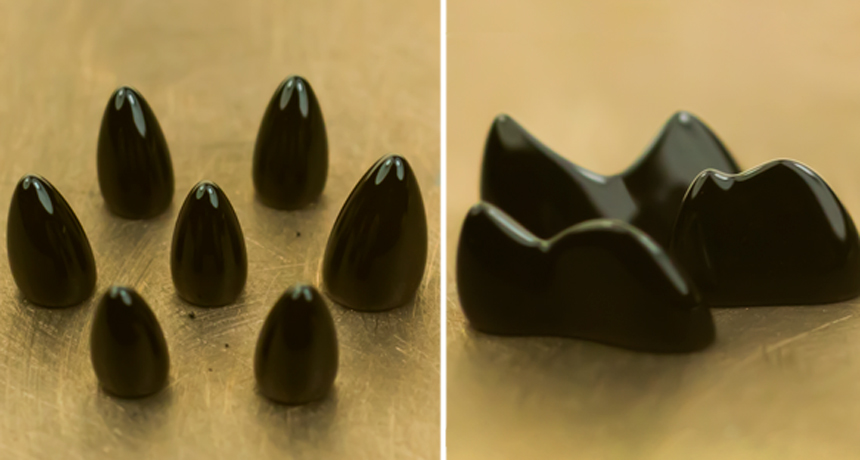Under magnet’s sway, fluids form simple structures
Droplets wiggle, split and coalesce into simple and dynamic configurations

SELF-ASSEMBLING SCULPTURE A dollop of ferrofluid under the influence of a magnetic field can split and arrange itself into simple droplets (left) and complex, warping formations (right).
Courtesy of Mika Latikka and Jaakko Timonen/Aalto Univ.







